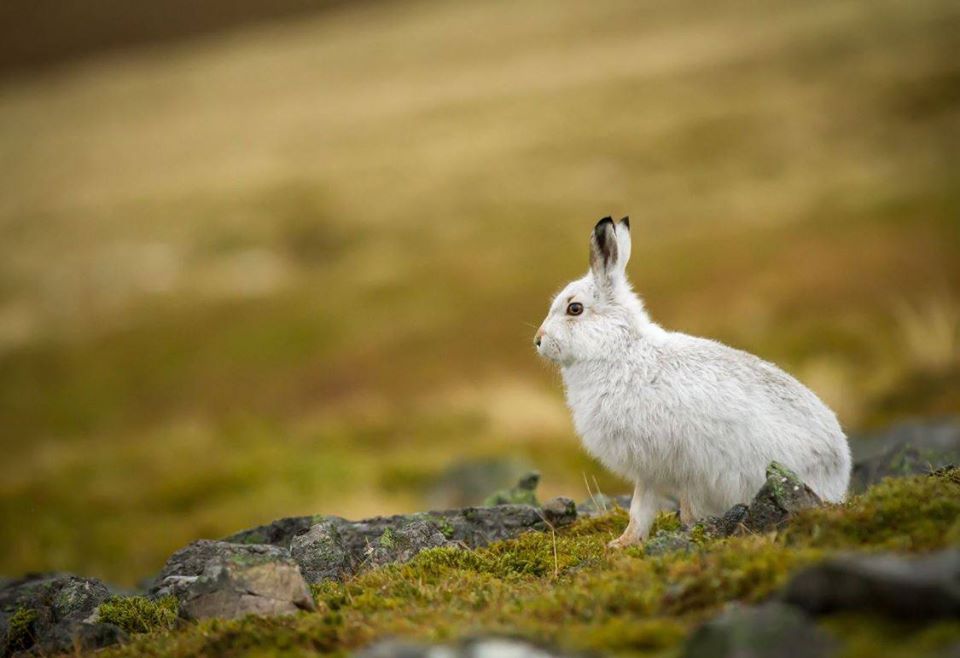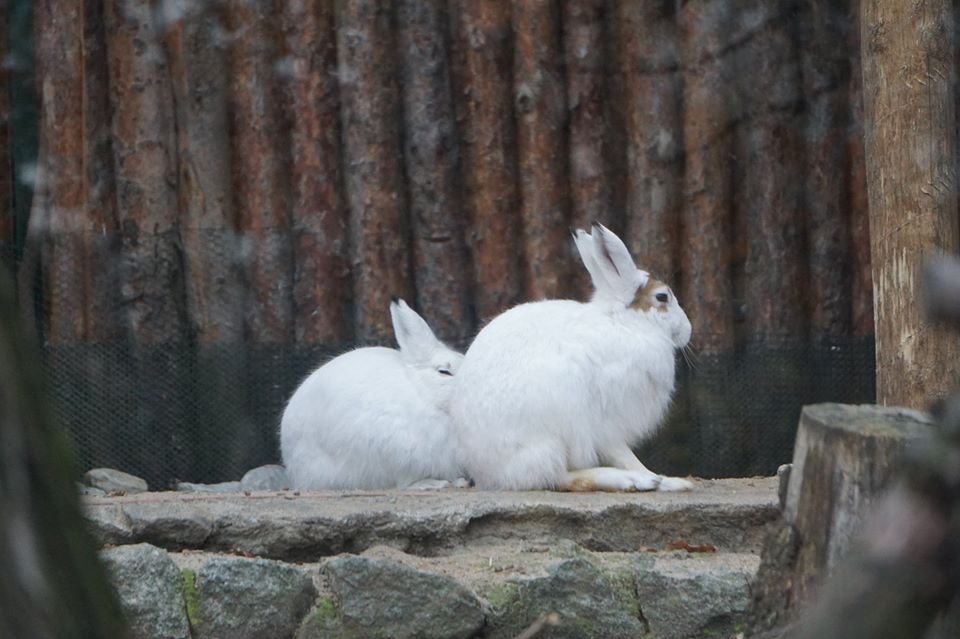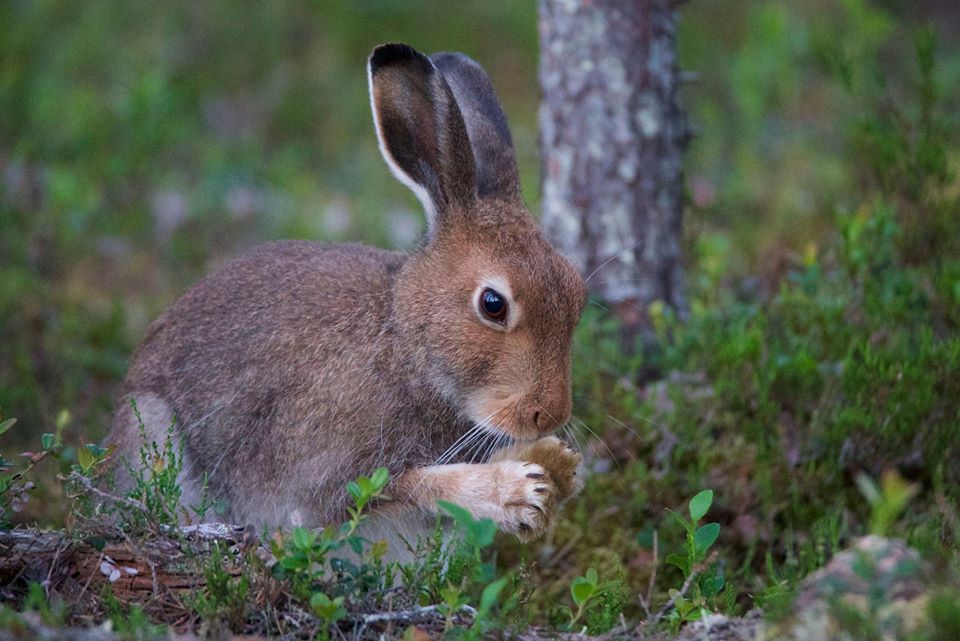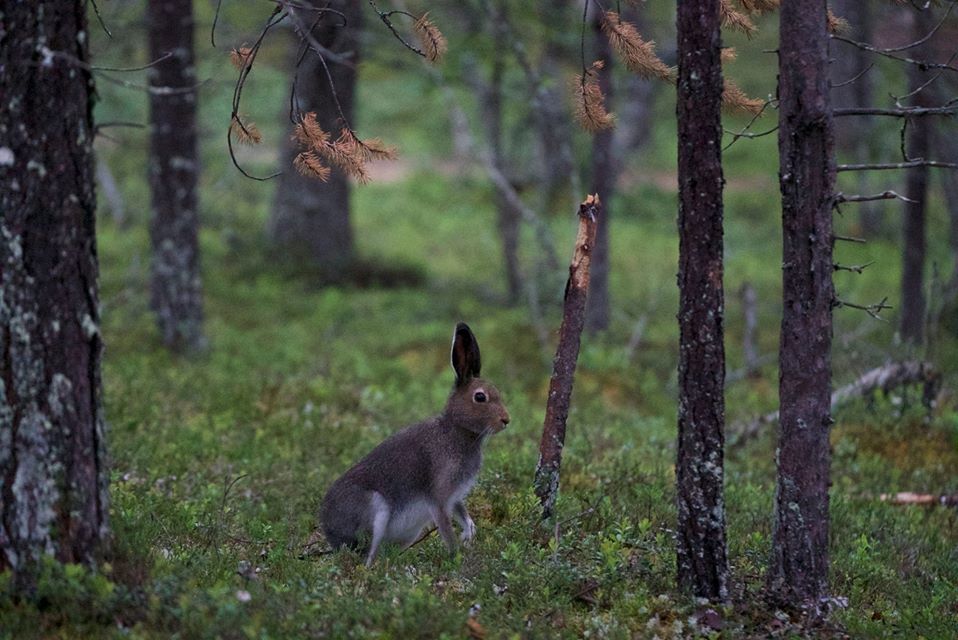Rabbits and hares belong to the Order Lagomorpha. Like deer they are important browsing species whose activities can significantly influence vegetation structure and composition. All three species can occur at sufficiently high population densities to cause both economic and ecological damage, for example by browsing young trees and preventing regrowth. The mountain hare (Lepus timidus) is Britain’s only native member of the group, as rabbits and brown hares are thought to have been introduced by the Normans and the Romans, respectively.

Rabbits – we may as well get used to them
Although they are introduced to Britain and may cause damage to some conservation sites, rabbits are now an important prey for birds of prey and mammalian predators such as the wildcat. They can help to maintain some grassland habitats by providing an open habitat for small plants. Rabbit numbers are controlled mainly by outbreaks of disease rather than their many natural predators.

Hardy mountain hares
In Scotland, heather moorland that is actively managed for grouse provides an optimum habitat for mountain hares, as the rotational burning ensures that there is always young heather growth available. Large numbers of hares can be found on some moors – the highest population densities occur on those hills in the eastern Highlands with more fertile soils, where the best habitats can sometimes support over 200 hares per km˛. Typical densities elsewhere are much lower – between 2 and 5/km˛. Hare numbers fluctuate on a cyclical basis, by ten-fold or more, peaking approximately every nine years or so.

Hare numbers decline where heather has been removed by grazing by sheep or high densities of deer or conversion to forestry. Young forestry plantations can support high densities of hares but these high densities decline once the forest canopy closes and the ground vegetation is diminished. No systematic data are available on long-term changes in mountain hare numbers but on some western Scottish moors they are now rare where they were previously abundant.

The mountain hare is our only truly montane/arctic mammal and is restricted to high ground (generally above 300-400m). This is not the case in Ireland where the brown hare was absent so it is probable that climate change could affect the mountain hare by enabling the brown hares to occupy higher ground.
Brown hares

The brown hare is thought to have been introduced by the Romans, but may have been present in the British Isles as early as the Iron Age. It is most common in arable areas, but requires some permanent cover, so farms with mixed crops are generally preferred. The brown hare population has been declining throughout much of 20th century, largely as a result of changes in farming practice. The current trend is less clear, with some evidence of an increase. Best practice guidance on managing land for the benefit of brown hares is available in the Game & Wildlife Conservation Trust publication ‘Conserving the brown hare’.





